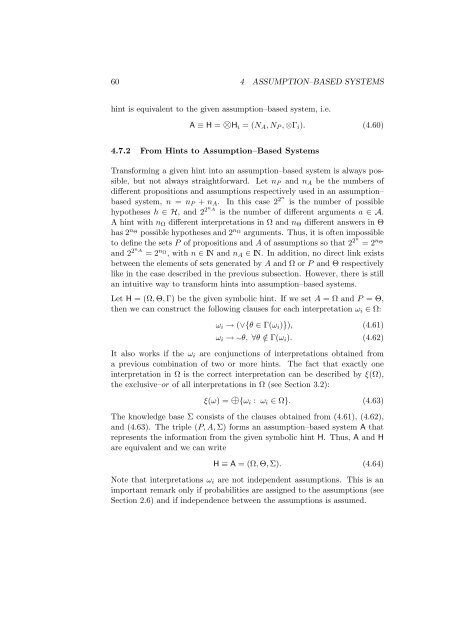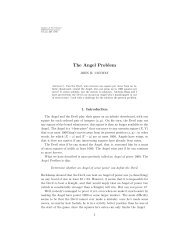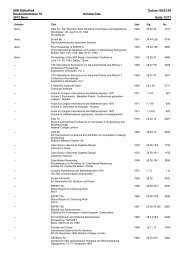Propositional Argumentation Systems and Symbolic Evidence Theory
Propositional Argumentation Systems and Symbolic Evidence Theory
Propositional Argumentation Systems and Symbolic Evidence Theory
You also want an ePaper? Increase the reach of your titles
YUMPU automatically turns print PDFs into web optimized ePapers that Google loves.
60 4 ASSUMPTION–BASED SYSTEMS<br />
hint is equivalent to the given assumption–based system, i.e.<br />
A ≡ H = ⊗H i = (N A , N P , ⊗Γ i ). (4.60)<br />
4.7.2 From Hints to Assumption–Based <strong>Systems</strong><br />
Transforming a given hint into an assumption–based system is always possible,<br />
but not always straightforward. Let n P <strong>and</strong> n A be the numbers of<br />
different propositions <strong>and</strong> assumptions respectively used in an assumption–<br />
based system, n = n P + n A . In this case 2 2n is the number of possible<br />
hypotheses h ∈ H, <strong>and</strong> 2 2n A<br />
is the number of different arguments a ∈ A.<br />
A hint with n Ω different interpretations in Ω <strong>and</strong> n Θ different answers in Θ<br />
has 2 n Θ<br />
possible hypotheses <strong>and</strong> 2 n Ω<br />
arguments. Thus, it is often impossible<br />
to define the sets P of propositions <strong>and</strong> A of assumptions so that 2 2n = 2 n Θ<br />
<strong>and</strong> 2 2n A<br />
= 2 n Ω, with n ∈ IN <strong>and</strong> n A ∈ IN. In addition, no direct link exists<br />
between the elements of sets generated by A <strong>and</strong> Ω or P <strong>and</strong> Θ respectively<br />
like in the case described in the previous subsection. However, there is still<br />
an intuitive way to transform hints into assumption–based systems.<br />
Let H = (Ω, Θ, Γ) be the given symbolic hint. If we set A = Ω <strong>and</strong> P = Θ,<br />
then we can construct the following clauses for each interpretation ω i ∈ Ω:<br />
ω i → (∨{θ ∈ Γ(ω i )}), (4.61)<br />
ω i → ∼θ, ∀θ /∈ Γ(ω i ). (4.62)<br />
It also works if the ω i are conjunctions of interpretations obtained from<br />
a previous combination of two or more hints. The fact that exactly one<br />
interpretation in Ω is the correct interpretation can be described by ξ(Ω),<br />
the exclusive–or of all interpretations in Ω (see Section 3.2):<br />
ξ(ω) = ⊕{ω i : ω i ∈ Ω}. (4.63)<br />
The knowledge base Σ consists of the clauses obtained from (4.61), (4.62),<br />
<strong>and</strong> (4.63). The triple (P, A, Σ) forms an assumption–based system A that<br />
represents the information from the given symbolic hint H. Thus, A <strong>and</strong> H<br />
are equivalent <strong>and</strong> we can write<br />
H ≡ A = (Ω, Θ, Σ). (4.64)<br />
Note that interpretations ω i are not independent assumptions. This is an<br />
important remark only if probabilities are assigned to the assumptions (see<br />
Section 2.6) <strong>and</strong> if independence between the assumptions is assumed.








